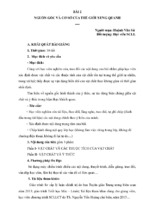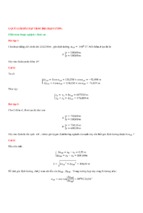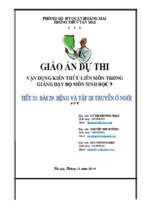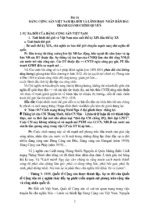Financial institutions management a risk management approach
Financial
Institutions
Management
A Risk Management Approach
sau05140_FM_i-xxii.indd i
8/24/07 12:27:27 PM
The McGraw-Hill/Irwin Series in Finance, Insurance, and Real Estate
Stephen A. Ross
Franco Modigliani Professor of Finance and
Economics Sloan School of Management
Massachusetts Institute of Technology
Consulting Editor
FINANCIAL MANAGEMENT
Adair
Excel Applications for Corporate
Finance
First Edition
Benninga and Sarig
Corporate Finance: A Valuation
Approach
Block and Hirt
Foundations of Financial Management
Twelfth Edition
Brealey, Myers, and Allen
Principles of Corporate Finance
Eighth Edition
Brealey, Myers, and Marcus
Fundamentals of Corporate Finance
Fifth Edition
Brooks
FinGame Online 5.0
Bruner
Case Studies in Finance: Managing for
Corporate Value Creation
Fifth Edition
Chew
The New Corporate Finance: Where
Theory Meets Practice
Third Edition
Chew and Gillan
Corporate Governance at the
Crossroads: A Book of Readings
First Edition
DeMello
Cases in Finance
Second Edition
Grinblatt (editor)
Stephen A. Ross, Mentor: Influence
Through Generations
Grinblatt and Titman
Financial Markets and Corporate
Strategy
Second Edition
Helfert
Techniques of Financial Analysis: A
Guide to Value Creation
Eleventh Edition
Higgins
Analysis for Financial Management
Eighth Edition
Kester, Ruback, and Tufano
Case Problems in Finance
Twelfth Edition
sau05140_FM_i-xxii.indd ii
Ross, Westerfield, and Jaffe
Corporate Finance
Eighth Edition
Ross, Westerfield, Jaffe, and Jordan
Corporate Finance: Core Principles and
Applications
First Edition
Ross, Westerfield, and Jordan
Essentials of Corporate Finance
Fifth Edition
Saunders and Cornett
Financial Markets and Institutions: An
Introduction to the Risk Management
Approach
Third Edition
Ross, Westerfield, and Jordan
Fundamentals of Corporate Finance
Eighth Edition
Shefrin
Behavioral Corporate Finance:
Decisions That Create Value
First Edition
White
Financial Analysis with an Electronic
Calculator
Sixth Edition
Kuemmerle
Case Studies in International
Entrepreneurship: Managing and
Financing Ventures in the Global
Economy
First Edition
INVESTMENTS
Adair
Excel Applications for Investments
First Edition
Bodie, Kane, and Marcus
Essentials of Investments
Sixth Edition
Bodie, Kane, and Marcus
Investments
Seventh Edition
Hirt and Block
Fundamentals of Investment
Management
Eighth Edition
Hirschey and Nofsinger
Investments: Analysis and Behavior
First Edition
Jordan and Miller
Fundamentals of Investments:
Valuation and Management
Fourth Edition
FINANCIAL INSTITUTIONS AND
MARKETS
Rose and Hudgins
Bank Management and Financial
Services
Seventh Edition
Rose and Marquis
Money and Capital Markets: Financial
Institutions and Instruments in a
Global Marketplace
Ninth Edition
Saunders and Cornett
Financial Institutions Management: A
Risk Management Approach
Fifth Edition
INTERNATIONAL FINANCE
Eun and Resnick
International Financial Management
Fourth Edition
REAL ESTATE
Brueggeman and Fisher
Real Estate Finance and Investments
Thirteenth Edition
Corgel, Ling, and Smith
Real Estate Perspectives: An
Introduction to Real Estate
Fourth Edition
Ling and Archer
Real Estate Principles: A Value
Approach
Second Edition
FINANCIAL PLANNING AND
INSURANCE
Allen, Melone, Rosenbloom, and
Mahoney
Retirement Plans: 401(k)s, IRAs,
and Other Deferred Compensation
Approaches
Tenth Edition
Altfest
Personal Financial Planning
First Edition
Harrington and Niehaus
Risk Management and Insurance
Second Edition
Kapoor, Dlabay, and Hughes
Focus on Personal Finance: An Active
Approach to Help You Develop
Successful Financial Skills
First Edition
Kapoor, Dlabay, and Hughes
Personal Finance
Eighth Edition
8/24/07 12:27:27 PM
Financial
Institutions
Management
A Risk Management Approach
Sixth Edition
Anthony Saunders
John M. Schiff Professor of Finance
Salomon Center
Stern School of Business
New York University
Marcia Millon Cornett
Rehn Professor of Business
Southern Illinois University
Boston Burr Ridge, IL Dubuque, IA New York San Francisco St. Louis
Bangkok Bogotá Caracas Kuala Lumpur Lisbon London Madrid Mexico City
Milan Montreal New Delhi Santiago Seoul Singapore Sydney Taipei Toronto
sau05140_FM_i-xxii.indd iii
8/24/07 12:27:29 PM
FINANCIAL INSTITUTIONS MANAGEMENT: A RISK MANAGEMENT APPROACH
Published by McGraw-Hill/Irwin, a business unit of The McGraw-Hill Companies, Inc., 1221
Avenue of the Americas, New York, NY, 10020. Copyright © 2008, 2006, 2003, 2000, 1997, 1994 by The
McGraw-Hill Companies, Inc. All rights reserved. No part of this publication may be reproduced or
distributed in any form or by any means, or stored in a database or retrieval system, without the prior
written consent of The McGraw-Hill Companies, Inc., including, but not limited to, in any network or
other electronic storage or transmission, or broadcast for distance learning.
Some ancillaries, including electronic and print components, may not be available to customers outside the United States.
This book is printed on acid-free paper.
1 2 3 4 5 6 7 8 9 0 QPD/QPD 0 9 8 7
ISBN 978-0-07-340514-8
MHID 0-07-340514-0
Editorial director: Brent Gordon
Executive editor: Michele Janicek
Executive marketing manager: Rhonda Seelinger
Lead project manager: Mary Conzachi
Senior production supervisor: Debra R. Sylvester
Lead designer: Matthew Baldwin
Lead media project manager: Cathy L. Tepper
Cover image: © Getty Images
Typeface: 10/12 Palatino
Compositor: Laserwords Private Limited
Printer: Quebecor World Dubuque Inc.
Library of Congress Cataloging-in-Publication Data
Saunders, Anthony, 1949–
Financial institutions management : a risk management approach / Anthony Saunders,
Marcia Millon Cornett.—6th ed.
p. cm.— (The McGraw-Hill/Irwin series in finance, insurance, and real estate)
Includes index.
ISBN-13: 978-0-07-340514-8 (alk. paper)
ISBN-10: 0-07-340514-0 (alk. paper)
1. Financial institutions—United States—Management. 2. Risk management—United
States. 3. Financial services industry—United States—Management. I. Cornett, Marcia
Millon. II. Title.
HG181.S33 2008
332.1068--dc22
2007026797
www.mhhe.com
sau05140_FM_i-xxii.indd iv
8/24/07 12:27:29 PM
This book is dedicated to Pat, Nicholas,
and Emily and to my mother, Evelyn.
Anthony Saunders
To the Millons and the Cornetts,
especially Galen.
Marcia Millon Cornett
sau05140_FM_i-xxii.indd v
8/24/07 12:27:29 PM
About the Authors
Anthony Saunders
Anthony Saunders is the John M. Schiff Professor of Finance and Chair of the
Department of Finance at the Stern School of Business at New York University.
Professor Saunders received his PhD from the London School of Economics and
has taught both undergraduate- and graduate-level courses at NYU since 1978.
Throughout his academic career, his teaching and research have specialized in financial institutions and international banking. He has served as a visiting professor all over the world, including INSEAD, the Stockholm School of Economics,
and the University of Melbourne. He is currently on the Executive Committee of
the Salomon Center for the Study of Financial Institutions, NYU.
Professor Saunders holds positions on the Board of Academic Consultants of
the Federal Reserve Board of Governors as well as the Council of Research Advisors for the Federal National Mortgage Association. In addition, Dr. Saunders
has acted as a visiting scholar at the Comptroller of the Currency and at the Federal Reserve Bank of Philadelphia. He also held a visiting position in the research
department of the International Monetary Fund. He is an editor of the Journal of
Banking and Finance and the Journal of Financial Markets, Instruments and Institutions, as well as the associate editor of eight other journals, including Financial
Management and the Journal of Money, Credit and Banking. His research has been
published in all the major money and banking and finance journals and in several
books. In addition, he has authored or coauthored several professional books, the
most recent of which is Credit Risk Measurement: New Approaches to Value at Risk and
Other Paradigms, 2nd edition, John Wiley and Sons, New York, 2002.
Marcia Millon Cornett
Marcia Millon Cornett is the Rehn Professor of Business at Southern Illinois
University at Carbondale. She received her BS degree in Economics from Knox
College in Galesburg, Illinois, and her MBA and PhD degrees in Finance from
Indiana University in Bloomington, Indiana. Dr. Cornett has written and published
several articles in the areas of bank performance, bank regulation, and corporate
finance. Articles authored by Dr. Cornett have appeared in such academic journals
as the Journal of Finance, the Journal of Money, Credit and Banking, the Journal of
Financial Economics, Financial Management, and the Journal of Banking and Finance.
She served as an Associate Editor of Financial Management and is currently
an Associate Editor for the Journal of Banking and Finance, Journal of Financial
Services Research, FMA Online, the Multinational Finance Journal and the Review of
Financial Economics. Dr. Cornett is currently a member of the Board of Directors,
the Executive Committee, and the Finance Committee of the SIU Credit Union.
Dr. Cornett has also taught at the University of Colorado, Boston College, and
Southern Methodist University. She is a member of the Financial Management
Association, the American Finance Association, and the Western Finance
Association.
vi
sau05140_FM_i-xxii.indd vi
8/24/07 12:27:30 PM
Preface
The financial services industry continues to undergo dramatic changes. Not only
have the boundaries between traditional industry sectors, such as commercial
banking and investment banking, broken down but competition is becoming increasingly global in nature. Many forces are contributing to this breakdown in interindustry and intercountry barriers, including financial innovation, technology,
taxation, and regulation. It is in this context that this book is written. Although the
traditional nature of each sector's product activity is analyzed, a greater emphasis
is placed on new areas of activities such as asset securitization, off-balance-sheet
banking, and international banking.
When the first edition of this text was released in 1994, it was the first to analyze
modern financial institutions management from a risk perspective. Thus, the title,
Financial Institutions Management: A Modern Perspective. At that time, traditional
texts presented an overview of the industry sector by sector, concentrating on balance sheet presentations and overlooking management decision making and risk
management. Over the last decade other texts have followed this change, such
that a risk management approach to analyzing modern financial institutions is
now well accepted. Thus, the title: Financial Institutions Management: A Risk Management Approach.
The sixth edition of this text takes the same innovative approach taken in the
first five editions and focuses on managing return and risk in modern financial
institutions (FIs). Financial Institutions Management’s central theme is that the risks
faced by FI managers and the methods and markets through which these risks are
managed are similar whether an institution is chartered as a commercial bank, a
savings bank, an investment bank, or an insurance company.
As in any stockholder-owned corporation, the goal of FI managers should always be to maximize the value of the financial intermediary. However, pursuit of
value maximization does not mean that risk management can be ignored.
Indeed, modern FIs are in the risk-management business. As we discuss in this
book, in a world of perfect and frictionless capital markets, FIs would not exist
and individuals would manage their own financial assets and portfolios. But since
real-world financial markets are not perfect, FIs provide the positive function of
bearing and managing risk on behalf of their customers through the pooling of
risks and the sale of their services as risk specialists.
INTENDED AUDIENCE
Financial Institutions Management: A Risk Management Approach is aimed at upperlevel undergraduate and MBA audiences. Occasionally there are more technical
sections that are marked with a footnote. These sections may be included or dropped
from the chapter reading, depending on the rigor of the course, without harming the continuity of the chapters.
vii
sau05140_FM_i-xxii.indd vii
8/24/07 12:27:30 PM
viii Preface
MAIN FEATURES
Throughout the text, special features have been integrated to encourage students'
interaction with the text and to aid them in absorbing the material. Some of these
features include:
• Standard & Poor's Market Insight Questions, which are included in the endof-chapter questions and problems and which guide the student through this
Web site to access data on specific financial institutions or industry sectors.
• In-chapter Internet Exercises and references, which guide the student to access the most recent data on the Web.
• International material highlights, which call out material relating to global issues.
• In-chapter Examples, which provide numerical demonstrations of the analytics
described in various chapters.
• Bold key terms and marginal glossary, which highlight and define the main
terms and concepts throughout the chapter.
• Concept Questions, which allow students to test themselves on the main concepts within each major chapter section.
• Ethical Dilemmas, Industry Perspectives, and Technology in the News
boxes, which demonstrate the application of chapter material to real current
events.
ORGANIZATION
Since our focus is on return and risk and the sources of that return and risk, this
book relates ways in which the managers of modern FIs can expand return with a
managed level of risk to achieve the best, or most favorable, return-risk outcome
for FI owners.
Chapter 1 introduces the special functions of FIs and takes an analytical look
at how financial intermediation benefits today's economy. Chapters 2 through 6
provide an overview describing the key balance sheet and regulatory features of
the major sectors of the U.S. financial services industry. We discuss depository
institutions in Chapter 2, insurance institutions in Chapter 3, securities firms and
investment banks in Chapter 4, mutual funds and hedge funds in Chapter 5, and
finance companies in Chapter 6. In Chapter 7 we preview the risk measurement
and management sections with an overview of the risks facing a modern FI. We
divide the chapters on risk measurement and management into two sections: measuring risk and managing risk.
In Chapters 8 and 9 we start the risk-measurement section by investigating the
net interest margin as a source of profitability and risk, with a focus on the effects
of interest rate volatility and the mismatching of asset and liability durations on FI
risk exposure. In Chapter 10 we analyze market risk, a risk that results when FIs
actively trade bonds, equities, and foreign currencies.
In Chapter 11 we look at the measurement of credit risk on individual loans
and bonds and how this risk adversely impacts an FI's profits through losses and
provisions against the loan and debt security portfolio. In Chapter 12 we look at the
risk of loan (asset) portfolios and the effects of loan concentrations on risk exposure.
Modern FIs do more than generate returns and bear risk through traditional
sau05140_FM_i-xxii.indd viii
8/24/07 12:27:31 PM
Preface
ix
maturity mismatching and credit extensions. They also are increasingly engaging
in off-balance-sheet activities to generate fee income (Chapter 13) pursuing foreign
exchange activities and overseas financial investments (Chapter 15), engaging in
sovereign lending and securities activities (Chapter 16), and making technological
investments to reduce costs (Chapter 16). Each of these has implications for the
size and variability of an FI's profits and/or revenues. In addition, as a by-product
of the provision of their interest rate and credit intermediation services, FIs face
liquidity risk. We analyze the special nature of this risk in Chapter 17.
In Chapter 18 we begin the risk-management section by looking at ways in
which FIs can insulate themselves from liquidity risk. In Chapter 19 we look at the
key role deposit insurance and other guaranty schemes play in reducing liquidity risk. At the core of FI risk insulation is the size and adequacy of the owners'
capital or equity investment in the FI, which is the focus of Chapter 20. Chapters 21 and 22 analyze how and why product diversification and geographic diversification—both domestic and international—can improve an FI's return-risk
performance and the impact of regulation on the diversification opportunity set.
Chapters 23 through 27 review various new markets and instruments that have
been innovated or engineered to allow FIs to better manage three important types
of risk: interest rate risk, credit risk, and foreign exchange risk. These markets and
instruments and their strategic use by FIs include futures and forwards (Chapter
23); options, caps, floors, and collars (Chapter 24); swaps (Chapter 25); loan sales
(Chapter 26); and securitization (Chapter 27).
CHANGES IN THIS EDITION
Each chapter in this edition has been revised thoroughly to reflect the most
up-to-date information available. End-of-chapter questions and problem material have also been expanded and updated to provide a complete selection of
testing material.
The following are some of the new features of this revision:
• The discussion of hedge funds in Chapter 5 has been expanded and included
in the body of Chapter 5. These relatively unregulated investment companies
now manage over $2 trillion in assets and have become a major sector of the
financial institutions industry.
• Chapter 6 includes a discussion of the crash in the subprime mortgage market
and the impact on finance companies that were deeply involved in this area of
mortgage lending.
• The impact of the devastating hurricane season in 2005, including Hurricane
Katrina, on insurance companies has been added to Chapter 3.
• Integrated Mini Cases have been added to several chapters. These exercises
combine the various numerical concepts within a chapter into one overall
problem.
• Additional end-of-chapter problems have been added to many of the chapters.
• A more detailed look at the interaction of interest rates, inflation, and foreign
exchange rates has been added to Chapter 14.
• Chapters 21 and 22 in the previous edition of the text have been combined so
that domestic and international geographic expansion are viewed as part of an
overall expansion strategy for financial institutions rather than as independent
activities.
sau05140_FM_i-xxii.indd ix
8/24/07 12:27:32 PM
x
Preface
• The order of Chapters 14 through 16 has been changed so that client-based risk
measures are now all presented first followed by risk measures associated with
the internal operations of the financial institution.
• The growth of the financial services holding company as a corporate form, first
allowed under the 1999 Financial Services Modernization Act, is highlighted in
several chapters. These entities can combine the various sectors of the financial
institutions industry into one holding company that offers a whole variety of
financial services.
• Ethical dilemmas continue to be an issue for financial institutions. In-chapter
discussions of the many ethical controversies involving financial institutions
(such as those involving commercial banks, investment banks, and mutual
funds) have been updated.
• The latest information pertaining to new capital adequacy rules (or Basel II) that
were implemented in 2006 has been highlighted in Chapter 20. The changes,
implemented in 2007, to the bank and savings institution insurance fund, deposit insurance premiums charged to financial institutions, and insurance coverage for financial institutions customers are discussed in Chapter 19.
• The impact of the rise in interest rates in the mid-2000s on financial institutions
is highlighted and discussed.
• Tables and figures in all chapters have been revised to include the most recently available data.
We have retained and updated these features:
• The risk approach of Financial Institutions Management has been retained, keeping the first section of the text as an introduction and the last two sections as a
risk measurement and risk management summary, respectively.
• We again present a detailed look at what is new in each of the different sectors of the financial institutions industry in the first six chapters of the text. We
have highlighted the continued international coverage with a global issues icon
throughout the text.
• The discussion of how the Financial Services Modernization Act of 1999 continues to affect financial institutions remains in several chapters.
• Chapter 16 includes material on electronic technology and the Internet's impact
on financial services. Technological changes occurring over the last decade
have changed the way financial institutions offer services to customers, both
domestically and overseas. The effect of technology is also referenced in other
chapters where relevant.
• Coverage of Credit Risk models (including newer models, such as KMV, CreditMetrics, and CreditRisk⫹ ) remains in the text.
• Coverage in the “Product Diversification” chapter and the “Geographic Expansion” chapter explores the increased inroads of banks into the insurance
field, the move toward nationwide banking (in the United States), and the rapid
growth of foreign banks and other intermediaries in the United States.
• A Web site has been expanded as a supplement to the text. The Web site, www.
mhhe.com/saunders6e, will include information about the book and an instructor's site containing the password-protected Instructor's Manual and PowerPoint material.
• Numerous highlighted in-chapter Examples remain in the chapters.
sau05140_FM_i-xxii.indd x
8/24/07 12:27:32 PM
Preface
xi
• Technology in the News boxes on how technology and the Internet are affecting
financial institutions as an industry have been updated.
• Internet references remain throughout each chapter as well as at the end of each
chapter, and Internet questions are found after the end-of-chapter questions.
• An extensive problem set, including S&P Market Insight, Excel, and Internet
exercises, can be found at the end of each chapter that allows students to practice a variety of skills using the same data or set of circumstances.
ANCILLARIES
To assist in course preparation, the following ancillaries are offered:
• The Online Learning Center at www.mhhe.com/saunders6e includes the
following:
• The Instructor's Manual/Test Bank includes detailed chapter contents, additional
examples for use in the classroom, PowerPoint teaching notes, complete solutions to end-of-chapter questions and problem material, and additional problems for test material, both in Word and computerized testing format.
• The PowerPoint Presentation System was created by Kenneth Stanton of the
University of Baltimore and is included on the Instructor's Resource CD. It contains useful and graphically enhanced outlines, summaries, and exhibits from
the text. The slides can be edited, printed, or arranged to fit the needs of your
course.
• Online quizzes are available at www.mhhe.com/saunders6e that provide students with chapter-specific interactive quizzing for self-evaluation.
sau05140_FM_i-xxii.indd xi
8/24/07 12:27:33 PM
Acknowledgments
Finally, we would like to thank the numerous colleagues who assisted with the
previous editions of this book. Of great help were the book reviewers whose
painstaking comments and advice guided the text through its first, second, third,
and fourth revisions.
Jack Aber
Boston University
Michael H. Anderson
Suffolk University
Rita Biswas
SUNY—Albany
M. E. Bond
University of Memphis
Yen Mow Chen
San Francisco State University
Jeffrey A. Clark
Florida State University
Robert A. Clark
Butler University
S. Steven Cole
University of North Texas
Douglas Cook
University of Mississippi
Paul Ellinger
University of Illinois
David Ely
San Diego State University
Elyas Elyasiani
Temple University
James H. Gilkeson
University of Central Florida
John H. Hand
Auburn University
Yan He
San Francisco State University
Alan C. Hess
University of Washington—Seattle
Kevin Jacques
Georgetown University and Office of the
Comptroller of the Currency
Julapa Jagtiani
Federal Reserve Bank of Chicago
Craig G. Johnson
California State University—Hayward
Nelson J. Lacey
University of Massachusetts at Amherst
Robert Lamy
Wake Forest University
Rick LeCompte
Wichita State University
Patricia C. Matthews
Mount Union College
Robert McLeod
University of Alabama
Rose M. Prasad
Central Michigan University
Tara Rice
Boston College
Don Sabbarese
Kennesaw State University
Daniel Singer
Towson University
Richard Stolz
California State University—Fullerton
Michael Toyne
Northeastern State University
Haluk Unal
University of Maryland
James A. Verbrugge
University of Georgia
Sonya Williams-Stanton
University of Michigan—Ann Arbor
xii
sau05140_FM_i-xxii.indd xii
8/24/07 12:27:33 PM
Acknowledgments
xiii
In addition, we gratefully acknowledge the contributions of the reviewers of the
fifth edition:
Mounther Barakat
University of Houston–Clear Lake
Sreedhar Bharath
University of Michigan
Kenneth Daniels
Virginia Commonwealth University
Joseph Finnerty
University of Illinios
Jack Clark Francis
Baruch College–CUNY
Jamie McNutt
Rutgers–Camden
Roberto Perli
University of Maryland
Kenneth Rhoda
LaSalle University
Robert Wolf
University of Wisconsin–La Crosse
We very much appreciate the contributions of the book team at McGraw-Hill/
Irwin: Michele Janicek, Executive Editor; Katherine Mau, Editorial Assistant; Julie
Phifer, Senior Marketing Manager; Cathy Tepper, Media Project Manager; Mary
Conzachi, Project Manager; Debra Sylvester, Production Supervisor; and Mathew
Baldwin, Designer. We are also grateful to our secretaries and assistants, Robyn
Vanterpool, Ingrid Persaud, Anand Srinivasan, and Sharon Moore.
Anthony Saunders
Marcia Millon Cornett
sau05140_FM_i-xxii.indd xiii
8/24/07 12:27:33 PM
Brief Contents
PART ONE
Introduction
1
1 Why Are Financial Intermediaries
Special? 2
2 The Financial Services Industry:
Depository Institutions 27
3 The Financial Services Industry:
Insurance Companies 66
4 The Financial Services Industry:
Securities Firms and Investment
Banks 93
5 The Financial Services Industry:
Mutual Funds and Hedge Funds 118
6 The Financial Services Industry:
Finance Companies 153
7 Risks of Financial Intermediation 168
PART TWO
Measuring Risk
189
8 Interest Rate Risk I
9 Interest Rate Risk II
10 Market Risk
190
221
266
11 Credit Risk: Individual Loan Risk 295
13 Off-Balance-Sheet Risk
372
14 Foreign Exchange Risk
400
15 Sovereign Risk
425
16 Technology and Other Operational
Risks 458
17 Liquidity Risk
493
PART THREE
Managing Risk
519
18 Liability and Liquidity
Management 520
19 Deposit Insurance and Other Liability
Guarantees 551
20 Capital Adequacy 586
21 Product Diversification
631
22 Geographic Expansion
656
23 Futures and Forwards
691
24 Options, Caps, Floors, and
Collars 728
25 Swaps
769
26 Loan Sales
797
27 Securitization
814
12 Credit Risk: Loan Portfolio and
Concentration Risk 348
xiv
sau05140_FM_i-xxii.indd xiv
8/24/07 12:27:34 PM
Contents
PART ONE
INTRODUCTION
Balance Sheet and Recent Trends 33
Other Fee-Generating Activities 38
Regulation 39
Industry Performance 44
1
Chapter One
Why Are Financial Intermediaries
Special? 2
Introduction 2
Financial Intermediaries' Specialness
Savings Institutions
3
Credit Unions
FIs Function as Brokers 5
FIs Function as Asset Transformers 5
Information Costs 6
Liquidity and Price Risk 7
Other Special Services 8
Other Aspects of Specialness
10
Safety and Soundness Regulation 11
Monetary Policy Regulation 12
Credit Allocation Regulation 13
Consumer Protection Regulation 13
Investor Protection Regulation 14
Entry Regulation 14
Trends in the United States
Future Trends 18
Global Issues 20
15
Chapter Three
The Financial Services Industry:
Insurance Companies 66
15
Summary 21
Appendix 1A
Monetary Policy Tools 26
(www.mhhe.com/saunders6e)
Introduction 66
Life Insurance Companies
Property–Casualty Insurance
29
66
75
Size, Structure, and Composition of the Industry
Balance Sheet and Recent Trends 76
Regulation 85
29
Size, Structure, and Composition of the Industry
66
Size, Structure, and Composition of the Industry
Balance Sheet and Recent Trends 71
Regulation 73
Chapter Two
The Financial Services Industry:
Depository Institutions 27
Introduction 27
Commercial Banks
54
Global Issues: Europe, Japan, and China 58
Summary 60
Appendix 2A
Financial Statement Analysis Using a Return on
Equity (ROE) Framework 64
(www.mhhe.com/saunders6e)
Appendix 2B
Depository Institutions and Their
Regulators 65
(www.mhhe.com/saunders6e)
Appendix 2C
Technology in Commercial Banking 65
(www.mhhe.com/saunders6e)
9
The Changing Dynamics of Specialness
48
53
Size, Structure, and Composition of the Industry
Balance Sheets and Recent Trends 55
Regulation 57
Industry Performance 57
The Transmission of Monetary Policy 9
Credit Allocation 9
Intergenerational Wealth Transfers or Time
Intermediation 9
Payment Services 10
Denomination Intermediation 10
Specialness and Regulation
47
Size, Structure, and Composition of the Industry
Balance Sheet and Recent Trends 50
Regulation 51
Industry Performance 52
75
Global Issues 86
Summary 88
xv
sau05140_FM_i-xxii.indd xv
8/24/07 12:27:34 PM
xvi Contents
Chapter Four
The Financial Services Industry:
Securities Firms and Investment
Banks 93
Industry Performance
Regulation 163
Global Issues 164
Summary 165
Introduction 93
Size, Structure, and Composition of the
Industry 95
Balance Sheet and Recent Trends 103
Chapter Seven
Risks of Financial Intermediation
Recent Trends 103
Balance Sheet 106
Regulation 108
Global Issues 112
Summary 114
Chapter Five
The Financial Services Industry: Mutual
Funds and Hedge Funds 118
Introduction 118
Size, Structure, and Composition of the Mutual
Fund Industry 119
Historical Trends 119
Different Types of Mutual Funds 122
Mutual Fund Objectives 126
Investor Returns from Mutual Fund Ownership
Mutual Fund Costs 131
Introduction 168
Interest Rate Risk 169
Market Risk 171
Credit Risk 173
Off-Balance-Sheet Risk 176
Foreign Exchange Risk 177
Country or Sovereign Risk 179
Technology and Operational Risks 180
Liquidity Risk 181
Insolvency Risk 182
Other Risks and the Interaction of Risks 183
Summary 184
Appendix 7A
Commercial Banks' Financial Statements and
Analysis 188
(www.mhhe.com/saunders6e)
PART TWO
Money Market Funds 134
Long-Term Funds 135
MEASURING RISK
Chapter Eight
Interest Rate Risk I
141
Types of Hedge Funds 144
Fees on Hedge Funds 148
Offshore Hedge Funds 148
Regulation of Hedge Funds 148
Summary
150
189
190
Introduction 190
The Level and Movement of Interest Rates
The Repricing Model 195
Chapter Six
The Financial Services Industry: Finance
Companies 153
Assets 157
Liabilities and Equity
sau05140_FM_i-xxii.indd xvi
161
191
Rate-Sensitive Assets 197
Rate-Sensitive Liabilities 198
Equal Changes in Rates on RSAs and RSLs 200
Unequal Changes in Rates on RSAs and RSLs 201
Weaknesses of the Repricing Model
Introduction 153
Size, Structure, and Composition of the
Industry 154
Balance Sheet and Recent Trends 157
168
128
Balance Sheet and Recent Trends for the Mutual
Fund Industry 134
Regulation of Mutual Funds 136
Global Issues in the Mutual Fund Industry
Hedge Funds 143
162
203
Market Value Effects 203
Overaggregation 203
The Problem of Runoffs 204
Cash Flows from Off-Balance-Sheet Activities
Summary 205
Appendix 8A
The Maturity Model 214
(www.mhhe.com/saunders6e)
Appendix 8B
Term Structure of Interest Rates
205
214
8/24/07 12:27:35 PM
Contents
Chapter Nine
Interest Rate Risk II
Fixed Income 283
Foreign Exchange 287
Equities 287
221
Introduction 221
Duration: A Simple Introduction 222
A General Formula for Duration 224
The BIS Regulations and Large-Bank Internal
Models 288
Summary 290
The Duration of Interest-Bearing Bonds 226
The Duration of a Zero-Coupon Bond 228
The Duration of a Consol Bond (Perpetuities) 228
Features of Duration
Chapter Eleven
Credit Risk: Individual Loan Risk
229
Duration and Maturity 229
Duration and Yield 229
Duration and Coupon Interest
Introduction 295
Credit Quality Problems
Types of Loans 299
230
The Economic Meaning of Duration
230
Semiannual Coupon Bonds 233
Duration and Interest Rate Risk
234
Duration and Interest Rate Risk Management on a Single
Security 234
Duration and Interest Rate Risk Management on the
Whole Balance Sheet of an FI 238
Immunization and Regulatory
Considerations 243
Difficulties in Applying the Duration Model
Duration Matching Can Be Costly 245
Immunization Is a Dynamic Problem 245
Large Interest Rate Changes and Convexity 246
Summary 248
Appendix 9A
The Basics of Bond Valuation 255
(www.mhhe.com/saunders6e)
Appendix 9B
Incorporating Convexity into the Duration
Model 256
Chapter Ten
Market Risk
266
Introduction 266
Calculating Market Risk Exposure
The RiskMetrics Model 268
267
The Market Risk of Fixed-Income Securities
Foreign Exchange 272
Equities 273
Portfolio Aggregation 274
Historic (Back Simulation) Approach
269
277
The Historic (Back Simulation) Model versus
RiskMetrics 281
The Monte Carlo Simulation Approach 282
Regulatory Models: The BIS Standardized
Framework 283
sau05140_FM_i-xxii.indd xvii
xvii
244
295
297
Commercial and Industrial Loans 299
Real Estate Loans 301
Individual (Consumer) Loans 303
Other Loans 305
Calculating the Return on a Loan
306
The Contractually Promised Return on a Loan
The Expected Return on a Loan 309
306
Retail versus Wholesale Credit Decisions
310
Retail 310
Wholesale 310
Measurement of Credit Risk
Default Risk Models 313
312
Qualitative Models 313
Credit Scoring Models 316
Newer Models of Credit Risk Measurement and
Pricing 320
Term Structure Derivation of Credit Risk 320
Mortality Rate Derivation of Credit Risk 326
RAROC Models 328
Option Models of Default Risk 332
Summary 337
Appendix 11A
Credit Analysis 347
(www.mhhe.com/saunders6e)
Appendix 11B
Black-Scholes Option Pricing Model
(www.mhhe.com/saunders6e)
347
Chapter Twelve
Credit Risk: Loan Portfolio and
Concentration Risk 348
Introduction 348
Simple Models of Loan Concentration Risk
Loan Portfolio Diversification and Modern
Portfolio Theory (MPT) 350
KMV Portfolio Manager Model 353
Partial Applications of Portfolio Theory
348
356
8/24/07 12:27:35 PM
xviii Contents
Loan Loss Ratio–Based Models
Regulatory Models 360
Interest Rate Parity Theorem
359
Summary
Summary 361
Appendix 12A
CreditMetrics 365
Appendix 12B
CreditRisk+ 369
Chapter Fifteen
Sovereign Risk 425
Chapter Thirteen
Off-Balance-Sheet Risk
Introduction 425
Credit Risk versus Sovereign Risk 428
Debt Repudiation versus Debt Rescheduling
Country Risk Evaluation 430
372
Introduction 372
Off-Balance-Sheet Activities and FI Solvency
Returns and Risks of Off-Balance-Sheet
Activities 378
373
Loan Commitments 380
Commercial Letters of Credit and Standby Letters of
Credit 384
Derivative Contracts: Futures, Forwards, Swaps, and
Options 386
Forward Purchases and Sales of When-Issued
Securities 389
Loans Sold 390
Non–schedule L Off-Balance-Sheet Risks
393
Wholesale Financial Services 462
Retail Financial Services 463
400
Foreign Exchange Rates 400
Foreign Exchange Transactions 401
Foreign Exchange Rate Volatility and FX Exposure
403
406
407
FX Trading Activities 407
The Profitability of Foreign Currency Trading
408
409
Interaction of Interest Rates, Inflation, and
Exchange Rates 417
sau05140_FM_i-xxii.indd xviii
Testing for Economies of Scale and Economies of
Scope 472
The Production Approach 472
The Intermediation Approach 473
The Return and Risk of Foreign Investments 409
Risk and Hedging 411
Multicurrency Foreign Asset–Liability Positions 415
417
The Effect of Technology on Revenues and
Costs 465
Technology and Revenues 466
Technology and Costs 467
Sources of Foreign Exchange Risk Exposure
Foreign Asset and Liability Positions
Chapter Sixteen
Technology and Other Operational
Risks 458
Introduction 458
What Are the Sources of Operational Risk? 459
Technological Innovation and Profitability 459
The Impact of Technology on Wholesale and
Retail Financial Service Production 462
400
Introduction 400
Foreign Exchange Rates and Transactions
Foreign Currency Trading
Outside Evaluation Models 431
Internal Evaluation Models 432
Debt Service Ratio (DSR) 434
Import Ratio (IR) 434
Investment Ratio (INVR) 435
Variance of Export Revenue (VAREX) 435
Domestic Money Supply Growth (MG) 436
Using Market Data to Measure Risk: The Secondary
Market for LDC Debt 442
391
The Role of OBS Activities in Reducing Risk
Summary 394
Appendix 13A
A Letter of Credit Transaction 399
(www.mhhe.com/saunders6e)
Chapter Fourteen
Foreign Exchange Risk
429
Summary 448
Appendix 15A
Mechanisms for Dealing with Sovereign Risk
Exposure 453
Settlement Risk 391
Affiliate Risk 392
Purchasing Power Parity
419
420
Empirical Findings on Cost Economies of Scale
and Scope and Implications for Technology
Expenditures 473
Economies of Scale and Scope and X-Inefficiencies
473
Technology and the Evolution of the Payments
System 475
Risks That Arise in an Electronic Payment System
Other Operational Risks
477
483
8/24/07 12:27:36 PM
Contents
Regulatory Issues and Technology and
Operational Risks 486
Summary 489
Retail Time Deposits and CDs 537
Wholesale CDs 538
Federal Funds 539
Repurchase Agreements (RPs) 540
Other Borrowings 540
Chapter Seventeen
Liquidity Risk 493
Introduction 493
Causes of Liquidity Risk 493
Liquidity Risk at Depository Institutions
494
Liability-Side Liquidity Risk 494
Asset-Side Liquidity Risk 498
Measuring a DI's Liquidity Exposure 500
Liquidity Risk, Unexpected Deposit Drains, and Bank
Runs 507
Bank Runs, the Discount Window, and Deposit
Insurance 509
Liquidity Risk and Life Insurance
Companies 510
Liquidity Risk and Property–Casualty
Insurers 511
Ivestment Funds 511
Summary 514
Appendix 17A
Sources and Uses of Funds Statements, Bank of
America, December 2005 518
(www.mhhe.com/saunders6e)
519
Chapter Eighteen
Liability and Liquidity Management
Introduction 520
Liquid Asset Management
520
520
Monetary Policy Implementation Reasons
Taxation Reasons 522
521
The Composition of the Liquid Asset
Portfolio 522
Return-Risk Trade-Off for Liquid Assets
523
532
Funding Risk and Cost 533
Choice of Liability Structure
533
Demand Deposits 534
Interest-Bearing Checking (NOW) Accounts 535
Passbook Savings 536
Money Market Deposit Accounts (MMDAs) 536
sau05140_FM_i-xxii.indd xix
Chapter Nineteen
Deposit Insurance and Other Liability
Guarantees 551
Introduction 551
Bank and Thrift Guaranty Funds 552
The Causes of the Depository Fund
Insolvencies 554
554
Panic Prevention versus Moral Hazard 556
Controlling Depository Institution Risk
Taking 557
Stockholder Discipline 557
Depositor Discipline 564
Regulatory Discipline 569
Non-U.S. Deposit Insurance Systems
The Discount Window 571
570
Deposit Insurance versus the Discount Window
The Discount Window 571
The Liquid Asset Reserve Management Problem for U.S.
Depository Institutions 523
Undershooting/Overshooting of the Reserve Target 527
Managing Liquid Assets Other than Cash 531
Liability Management
Liquidity and Liability Structures for U.S.
Depository Institutions 542
Liability and Liquidity Risk Management in
Insurance Companies 544
Liability and Liquidity Risk Management in
Other FIs 544
Summary 545
Appendix 18A
Federal Reserve Requirement Accounting 550
(www.mhhe.com/saunders6e)
Appendix 18B
Bankers Acceptances and Commercial Paper as a
Source of Financing 550
(www.mhhe.com/saunders6e)
The Financial Environment
Moral Hazard 555
PART THREE
MANAGING RISK
xix
Other Guaranty Programs
571
573
National Credit Union Administration 573
Property–Casualty and Life Insurance Companies 574
The Securities Investor Protection Corporation 575
The Pension Benefit Guaranty Corporation 575
Summary 577
Appendix 19A
Calculation of Deposit Insurance
Premiums 582
Appendix 19B
FDIC Press Releases of Bank Failures
(www.mhhe.com/saunders6e)
585
8/24/07 12:27:37 PM
- Xem thêm -




















